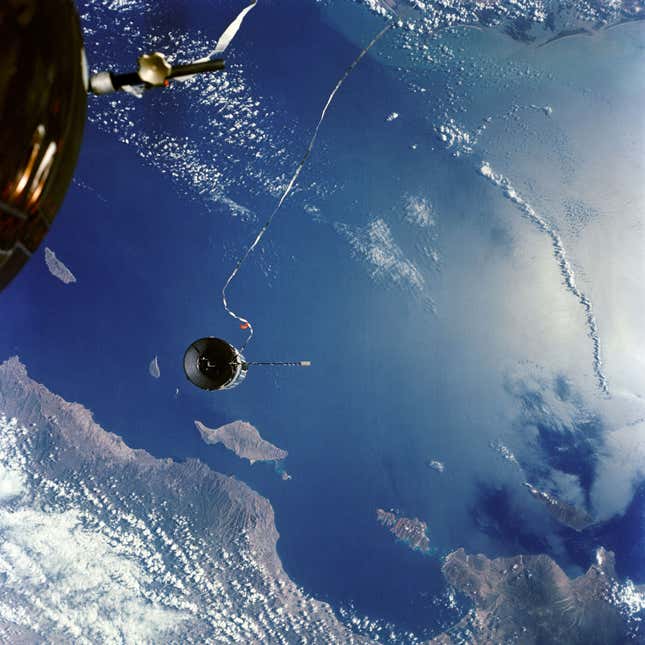The International Space Station is due for decommission in the 2030s. NASA is currently evaluating how to go about retiring the station: options include letting it burn up in the atmosphere or pushing it into a graveyard orbit. There’s another option that doesn’t involve disposing of the ISS at all, which would extend the life of the station by leveraging its considerable size and mass for future space missions. The ISS could be the ideal anchor for a skyhook that would act like a slingshot to propel people and cargo into space cheaply, as Aeon reports.
The concept is so bafflingly simple that it’s a mystery why agencies around the globe are not all-in on the idea. Go read this essay over at Aeon, which goes into detail to describe the skyhook (or skyhooks) to see what it’s all about. The gist of it is that space junk, or debris that has accumulated over decades of space exploration, could be used as counterweights attached to tethers that catch spacecraft in the Earth’s atmosphere, then release them into space.
The skyhooks would eliminate the need for tons of fuel, and would even allow for greater payloads to be sent into space. Aeon explains how the concept could apply to the ISS, and this Kurzgesagt video explains the idea in general:
Aeon describes the contraption as “a space structure that could lift materials from Earth to near-Earth orbit and beyond.” The essay goes on to describe these possible devices as “non-rocket space-launch systems” the require a massive object for stability, which must already be in space for the concept to function.

That’s where the ISS and other large “dead” satellites, such as Envisat — a 26-meter long, 10-meter wide former communications satellite — come in.These could provide a major component of the skyhooks. The ISS, too, since it’s the largest object humanity has launched into space. Per Aeon:
The most promising candidate for a counterweight turns out to be the International Space Station, but marshalling that potential requires several key steps. First, we’d have to shut down the station and remove hazardous elements. Next, we’d have to depressurise and reinforce the structure to maximise stability. Additional propulsion would be required to position the station at a higher altitude as well. Once the ISS is in position, designing attachment points capable of withstanding the forces imposed by the rotating cable would be critical. When those points are in place, the skyhook cable could be deployed and attached to the station.
According to the latest skyhook designs, the counterweight must be significantly larger than the payload, with a minimum ratio of 1,000 times the payload’s size. So, in order to boost the skyhook’s capability to handle larger payloads, additional counterweights, such as defunct satellites, might be strategically attached to the ISS, effectively increasing its mass and efficiency, a retro-fusion of sorts.
What began as a combination of technological progress and waste – the accumulation of mass in space – has now become a valuable asset, reshaping the foundation of spaceflight. Embracing the untapped potential of space objects and debris would lead us to a design shift that goes beyond viewing objects as potential pieces of a greater whole. This shift would guide their conceptualisation from the bottom up, fostering a new approach where each object is informed, designed and constructed with the intention of preserving and repurposing it within a sustainable and resourceful paradigm of spaceflight, effectively preserving cultural value and transforming our current wasteful system.*
Not only is the idea clever but it would save money and other resources, as well as enable the construction of space infrastructure, according to Kurzgesagt. The way video illustrates the concept makes it seem viable. In fact, the concept makes you consider just how wasteful space exploration is at the moment, currently relying on massive amounts of our finite resources to launch relatively small payloads.
Skyhook(s) could provide a compelling alternative so long as we’re open to the paradigm shift of reusing resources rather than literally burning them up — be it in a booster rocket or in a fiery descent to Earth. But it may be worth it for a system that allow us to reuse the detritus orbiting the Earth.


